Topics
Category
Era
Somali Museum of Minnesota
The interior of an aqal (ah-kal), a traditional Somali home, recreated for the Somali Museum of Minnesota. An aqal is held together by ropes and tree branches and covered with kabad (hand-woven mats). Photograph by Nikki Tundel, 2016.
The Somali Museum of Minnesota was founded in 2013 to preserve Somali culture and tradition through art exhibits, educational programs, and dance. Since then, the Minneapolis-based nonprofit has become more visible to Somali Americans across the United States as it expands efforts to showcase its growing artifact collections and traditional Somali dance across North America.
In 2009, Osman Ali began collecting traditional Somali artifacts and displaying them in the basement of his Minneapolis café, Sanaag Coffee and Restaurant. His goal was to give customers glimpses of the history, culture, and tradition of Somali Americans.
The museum’s collections grew over the years. The café's basement, where they were stored, became a popular destination for those who wanted to experience both Somali cuisine and Somali cultural artifacts in a single place.
Then, one day in 2012, Ali learned that someone more prominent was coming to the restaurant: US Senator Al Franken, who wanted to try Somali food and see the collections. But Ali felt that taking the senator to the basement to see the artifacts wasn’t “a good thing.”
To solve this problem, Ali transferred the items to a building next door, where he created a makeshift mini-museum. Before long, it displayed more than 150 artifacts, including traditional milk jars and containers, wooden bowls, and spoons, as well as woven prayer mats and wall rugs.
That temporary shift inspired Ali to do something no other Somali had—or has, to date— done in the United States: he created a museum that houses the culture and tradition of the East African community. That meant moving his collections to a permanent space at 1516 East Lake Street, where a larger number of visitors could access them to learn about the nomadic Somali lifestyle.
From that process was born the Somali Museum of Minnesota in 2013. It aimed to preserve Somali culture and traditions and to share them with Minnesota residents interested in learning about the community.
In 2018, the nonprofit organization boasts more than 700 artifacts. It also displays traveling exhibitions at major events across the country and provides educational programs in Somali history, culture, art, and dance. In addition to its general hours (3:00–7:00 p.m. on Tuesdays and Fridays; 1:00–5:00 p.m. on weekends), the museum offers personalized visits for individuals interested in learning more about the culture.
Over the years, the museum has received invitations from communities and schools in Minnesota, Ohio, Texas, California, Canada, and Mogadishu, where Ali and his team have either presented on Somali history or displayed cultural artifacts.
Each year, since 2014, the museum hosts more than 1,000 people to commemorate its founding anniversary, bringing together world-renowned Somali artists, educators, and historians from across the United States, Canada, and Europe.
In 2017, the museum received the Innovation Award—which recognizes the achievements of Somali organizations and professionals worldwide—at the International Somali Awards in London.
Bibliography
Ali, Osman (founder and executive director of the Somali Museum of Minnesota). Interview with the author, July 31, 2016.
Somali Museum of Minnesota.
http://www.somalimuseum.org
Video posted by the “International Somali Awards” Facebook account, March 30, 2017.
https://www.facebook.com/internationalsomaliawards/videos/1259660420818707
Related Resources
Primary
OH 123
Somali Skyline Tower Oral History Project
Oral History Collection, Minnesota Historical Society, St. Paul
Description: Includes interviews with fifteen Somali women from St. Paul public schools, conducted in June 2004.
http://collections.mnhs.org/cms/display.php?irn=10614893
Secondary
Yusuf, Ahmed Ismail. Somalis in Minnesota. St. Paul: Minnesota Historical Society Press, 2012.
Web
Hirsi, Ibrahim. “Confederation of Somali Community in Minnesota.” MNopedia, October 17, 2017.
http://www.mnopedia.org/place/confederation-somali-community-minnesota
Yusuf, Ahmed Ismail. “Somali Poetry in Minnesota.” MNopedia, November 14, 2017.
http://www.mnopedia.org/thing/somali-poetry-minnesota
Related Images
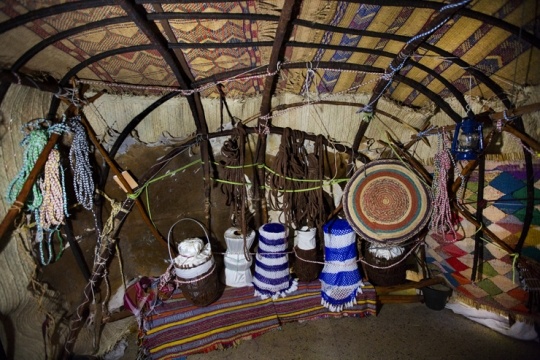
Interior of a traditional Somali home
The interior of an aqal (ah-kal), a traditional Somali home, recreated for the Somali Museum of Minnesota. An aqal is held together by ropes and tree branches and covered with kabad (hand-woven mats). Photograph by Nikki Tundel, 2016.
All rights reserved
Holding Location
Articles
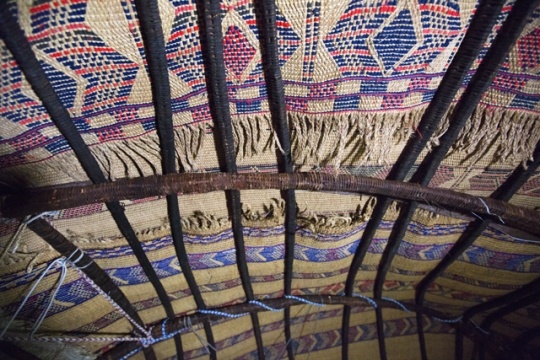
Interior roof of a Somali home
The interior roof of an aqal, a traditional Somali home held together by ropes and thick branches and covered with kabad (hand-woven mats). Weaving by hand is a traditional Somali skill. Photograph by Nikki Tundel, 2016.
All rights reserved
Holding Location
Articles
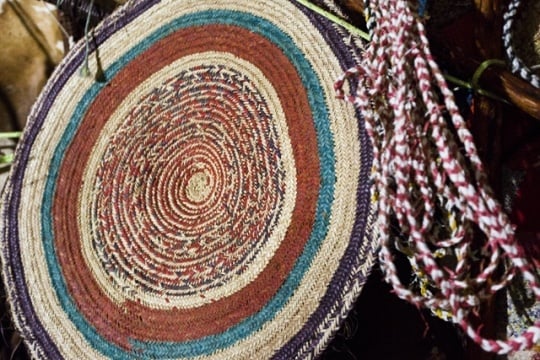
Kabad (kbæd or ka-bad; hand-woven mat/wall decoration)
Kabad (kbæd or ka-bad; hand-woven mat and wall decoration). Weaving by hand is a traditional Somali skill. Photograph by Nikki Tundel, 2016.
All rights reserved
Holding Location
Articles
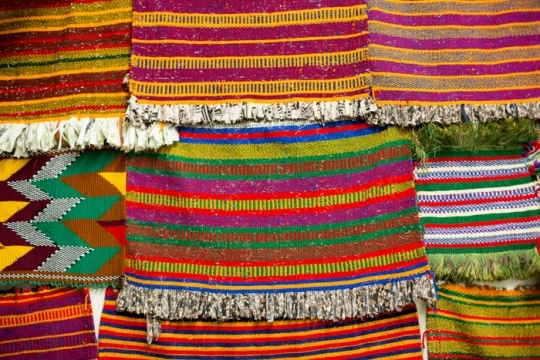
Kabad (kbæd or ka-bad; hand-woven mats/wall decorations)
Kabad (kbæd or ka-bad; hand-woven mats/wall decorations). Weaving by hand is a traditional Somali skill. Photograph by Nikki Tundel, 2016.
All rights reserved
Holding Location
Articles
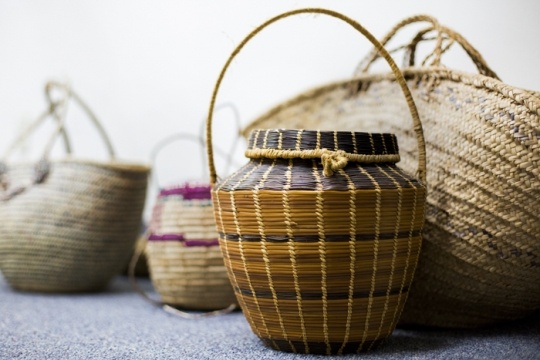
Ubo (ʌbʊ or oobo; water container)
Ubo (ʌbʊ or oobo; water container). Photograph by Nikki Tundel, 2016.
All rights reserved
Holding Location
Articles
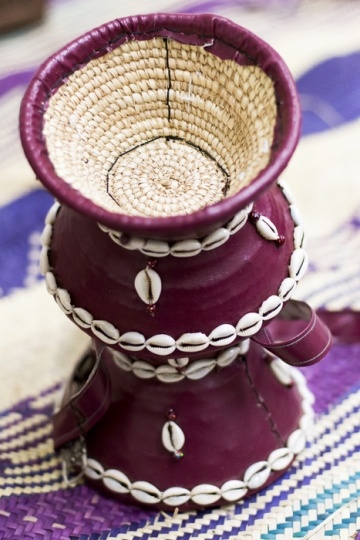
Dhiil (dee-l; decorative container)
Dhiil (dee-l), a decorative container usually displayed within a traditional Somali aqal (ah-kal; house). Photograph by Nikki Tundel, 2016.
All rights reserved
Holding Location
Articles
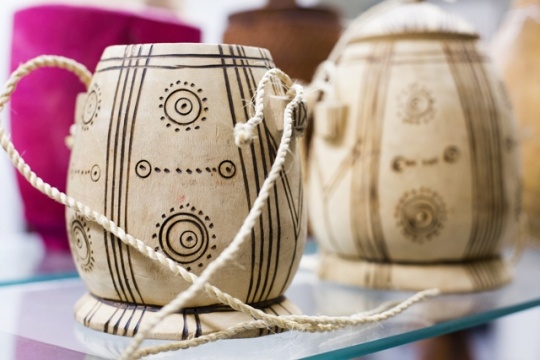
Dhiil gori ah (dee-l ɡəʊ-ri ɑh or dee-l go-ri ah; wooden milk container)
Dhiil gori ah (dee-l ɡəʊ-ri ɑh or dee-l go-ri ah; wooden milk container). Photograph by Nikki Tundel, 2016.
All rights reserved
Holding Location
Articles
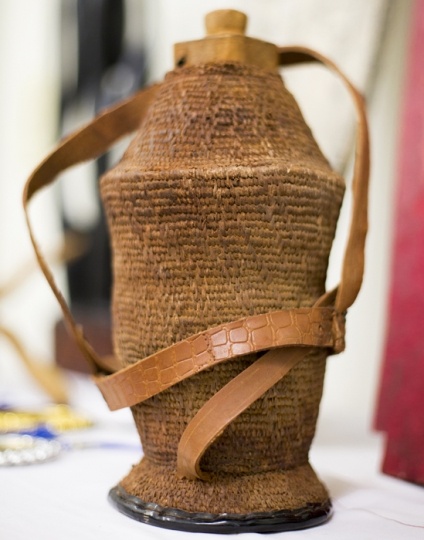
Dhiil qaba ah (dee-l ka-ba ɑh; woven milk vessel)
Dhiil qaba ah (dee-l ka-ba ɑh; woven milk vessel). Photograph by Nikki Tundel, 2016.
All rights reserved
Holding Location
Articles
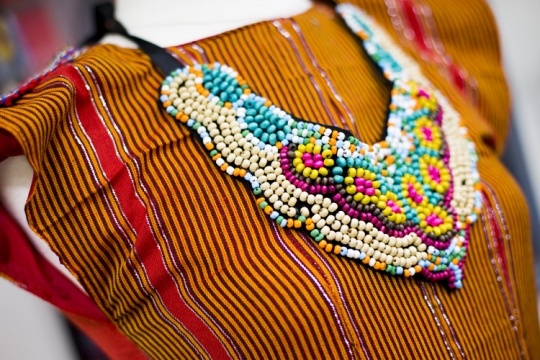
Subeeciyad (sue-bay-see-yad; traditional Somali female dress)
Subeeciyad (sue-bay-see-yad; traditional Somali female dress worn at festive occasions). Photograph by Nikki Tundel, 2016.
All rights reserved
Holding Location
Articles
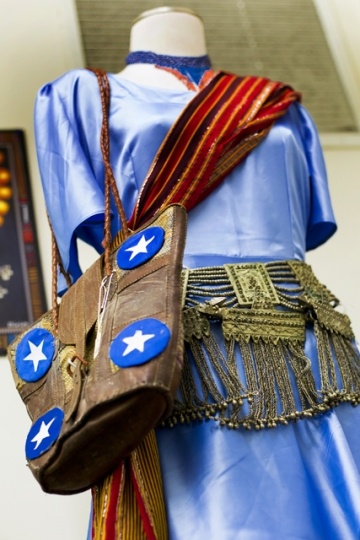
Subeeciyad (sue-bay-see-yad; traditional Somali female dress)
Subeeciyad (sue-bay-see-yad; traditional Somali female dress worn at festive occasions). Photograph by Nikki Tundel, 2016.
All rights reserved
Holding Location
Articles
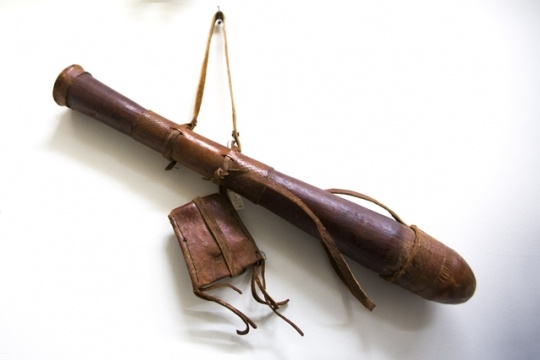
Qulux (koo-loo-x; quiver/arrow holder)
Qulux (koo-loo-x, with a fricative ‘x’; quiver/arrow holder). Photograph by Nikki Tundel, 2016.
All rights reserved
Holding Location
Articles

Fandal/qaado (fan-dal/kaa-dow; traditional Somali hand-carved spoon)
Fandal/qaado (fan-dal/kaa-dow; traditional Somali hand-carved spoon). Photograph by Nikki Tundel, 2016.
All rights reserved
Holding Location
Articles
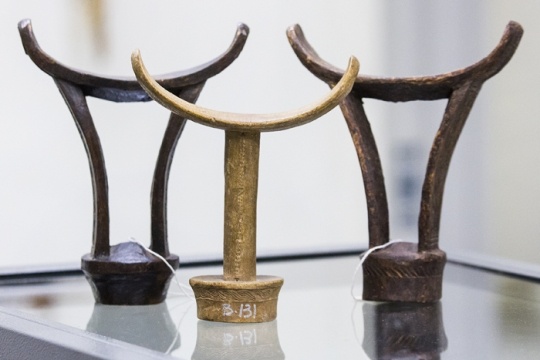
Barkin (bar-kin; traditional Somali headrest)
Barkin (bar-kin; traditional Somali headrest). Photograph by Nikki Tundel, 2016.
All rights reserved
Holding Location
Articles
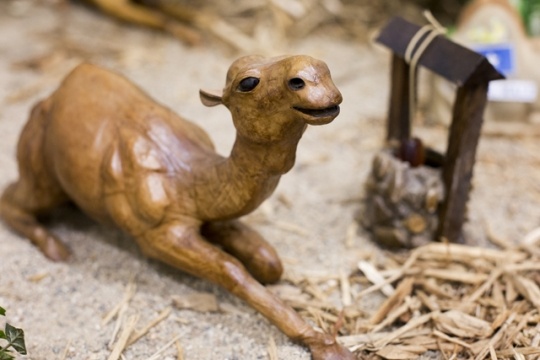
A carved geel (camel)
A carved geel (g-el; camel). The camel is an important animal to the Somali people and represents wealth and health. Photograph by Nikki Tundel, 2016.
All rights reserved
Holding Location
Articles
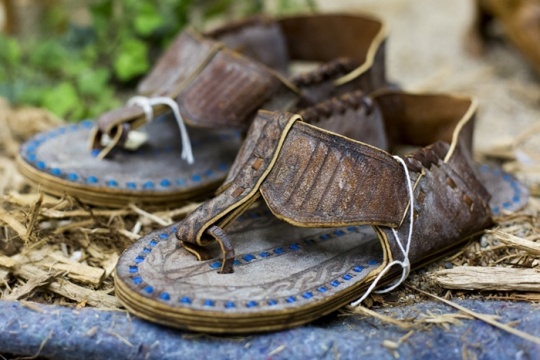
Kabo (ka-bo; shoes)
A pair of kabo (ka-bo; shoes). Historically, Somali people wore shoes made from dried animal hide. Photograph by Nikki Tundel, 2016.
All rights reserved
Holding Location
Articles
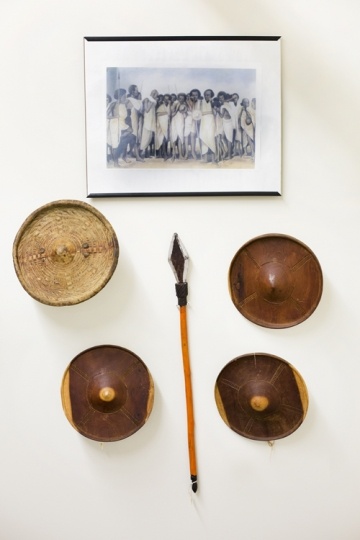
Gaashan (g-aa-sh-n; shields) and waran (wh-ran; spear)
Gaashan (g-aa-sh-n; shields) and waran (wh-ran; spear). Photograph by Nikki Tundel, 2016.
All rights reserved
Holding Location
Articles
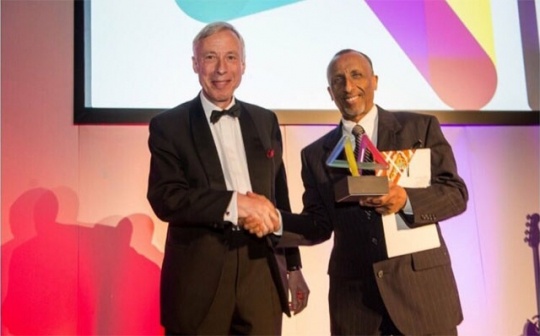
Osman Ali, founder of the Somali Museum of Minnesota
Osman Ali, founder Somali Museum of Minnesota (right), accepting the Innovation Award at the 2017 International Somali Awards in London on March 15, 2017.
All rights reserved
Holding Location
Articles
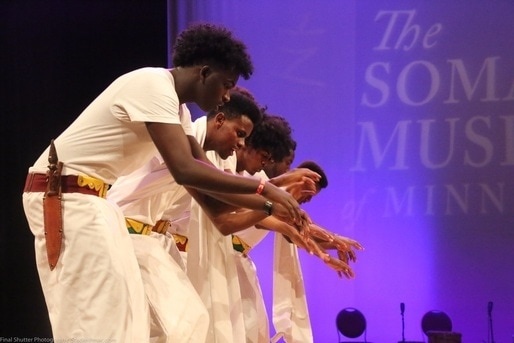
Dancers at the Somali Museum of Minnesota's third anniversary celebration
Dancers perform at the Somali Museum of Minnesota's third anniversary celebration on October 1, 2016. Photograph by Final Shutter Photography.
All rights reserved
Articles
Related Articles
Turning Point
In 2013, the Somali Museum of Minnesota becomes the first cultural center in the United States created to preserve Somali culture and tradition—and to share them with others while offering education about the community.
Chronology
1991
1995
2009
2013
2014
2017
Bibliography
Ali, Osman (founder and executive director of the Somali Museum of Minnesota). Interview with the author, July 31, 2016.
Somali Museum of Minnesota.
http://www.somalimuseum.org
Video posted by the “International Somali Awards” Facebook account, March 30, 2017.
https://www.facebook.com/internationalsomaliawards/videos/1259660420818707
Related Resources
Primary
OH 123
Somali Skyline Tower Oral History Project
Oral History Collection, Minnesota Historical Society, St. Paul
Description: Includes interviews with fifteen Somali women from St. Paul public schools, conducted in June 2004.
http://collections.mnhs.org/cms/display.php?irn=10614893
Secondary
Yusuf, Ahmed Ismail. Somalis in Minnesota. St. Paul: Minnesota Historical Society Press, 2012.
Web
Hirsi, Ibrahim. “Confederation of Somali Community in Minnesota.” MNopedia, October 17, 2017.
http://www.mnopedia.org/place/confederation-somali-community-minnesota
Yusuf, Ahmed Ismail. “Somali Poetry in Minnesota.” MNopedia, November 14, 2017.
http://www.mnopedia.org/thing/somali-poetry-minnesota



















